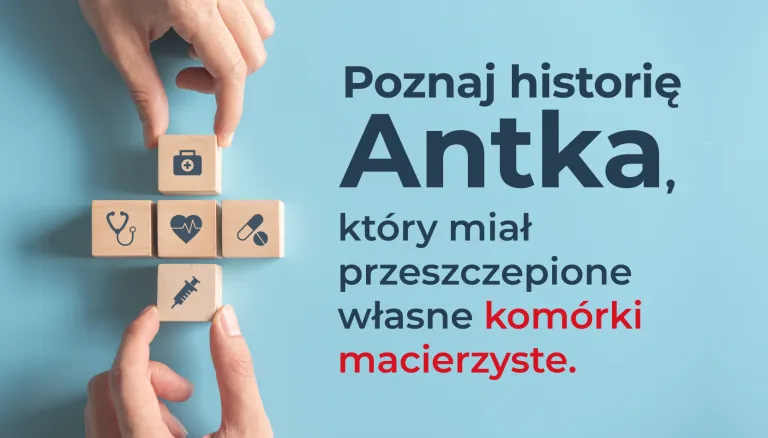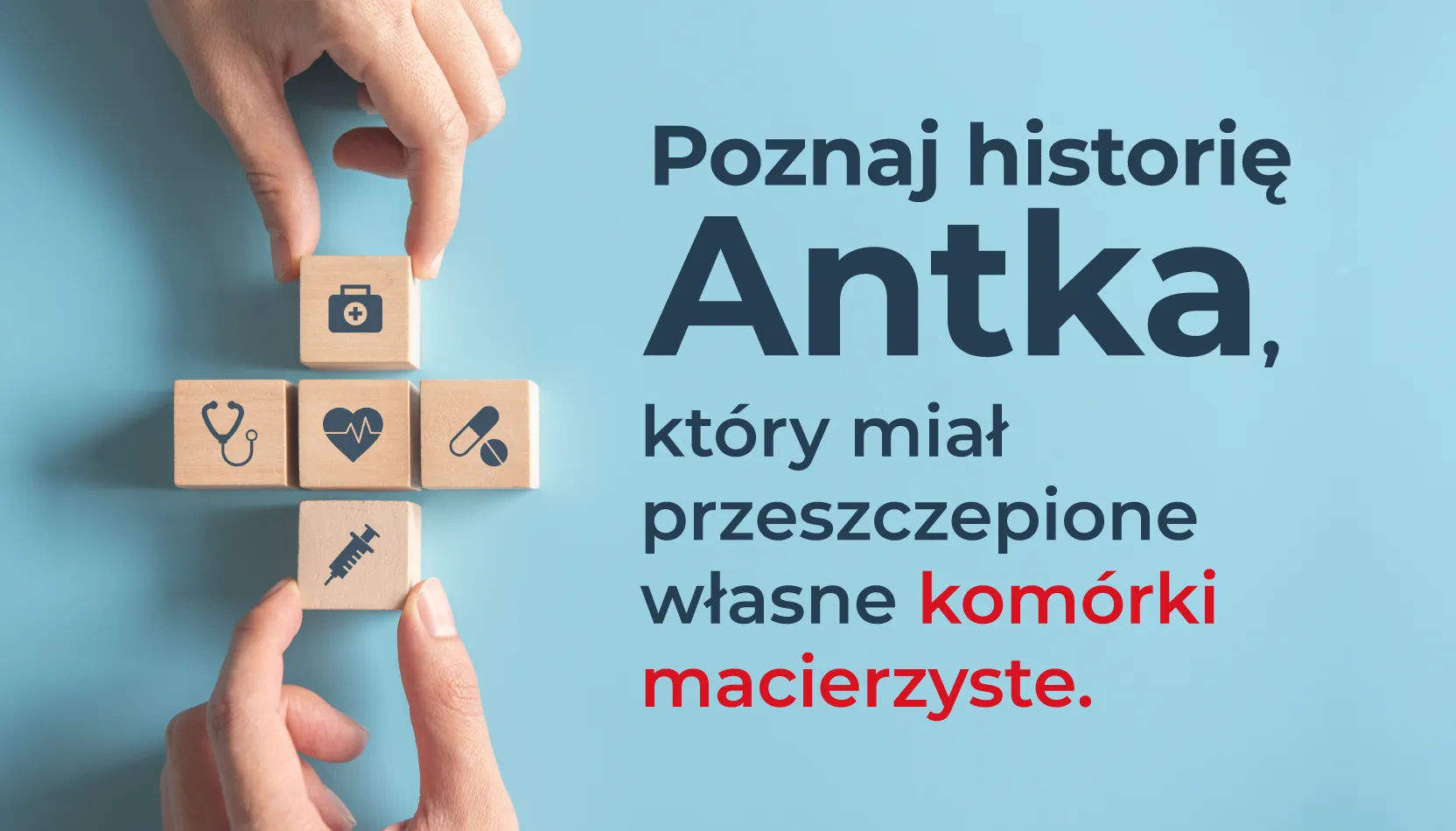The story of Antek is one of those stories where the parents' own stem cells from cord blood taken during his birth were used in the treatment. The decision made by the Parents before the birth related to cord blood banking saved the boy's life.
In December 2017, a 3-year-old boy, Antoś, was admitted to one of the hospitals. Antoś had a very high fever, which could not be brought down with medication. The diagnosis: a severe form of aplastic anemia. The boy urgently needed a bone marrow transplant, as any infection could prove fatal for him. Fortunately, during Antek’s delivery, his Parents secured stem cells from umbilical cord blood, which could be transplanted into the boy. ,,Of all the methods of treating Antoś, this method turned out to be the most optimal for Antosia – a transplant of stem cells taken during Antosia’s birth.” – said Mr. Bartek, the boy’s dad. Antek was treated with his own stem cells from cord blood, which saved his life.
Aplastic anemia-what is the disease?
Aplastic anemia, or aplastic anemia, is a disease of the bone marrow.
In its course, the production of blood cells is impaired, leading to so-called “pancytopenia.
pancytopenia.
The number of platelets, erythrocytes and white blood cells (leukocytes) is reduced.
Aplastic anemia can be congenital or acquired.
It can also be the result of various other diseases, such as viral diseases.
Symptoms of aplastic anemia include all symptoms that result from a deficiency of blood morphotic elements.
Symptoms of an insufficient number of erythrocytes include shortness of breath, impaired concentration, weakness, dizziness or pale skin.
Reduced white blood cell count carries immune disorders, susceptibility to infections or fever.
Thrombocytopenia, on the other hand, can manifest as skin and mucosal bleeding, petechiae or bleeding gums, for example.
Treatment of aplastic anemia depends on the course and severity of the disease.
In the case of severe symptoms, it is necessary to implement specialized hematological treatment.
The treatments used include.
immunosuppressive treatment, as well as bone marrow transplantation.
One method is to treat aplastic anemia using the patient’s own stem cells, with the goal of stimulating the bone marrow to produce blood cells.
Without the implementation of appropriate treatment, aplastic anemia is a fatal disease.
Patients usually die from severe bacterial or fungal infections.
What is the story of Antek?
Antek was born as a healthy boy.
Until the age of 3.
year of life he developed normally.
The first symptoms of the boy’s illness that the Parents noticed were immune disorders, prolonged fevers and numerous infections.
Each, for others trivial infection, Antek passed with high temperature and severe symptoms.
In addition, he also developed weakness and a complete lack of energy.
In the course of one of the infections Antoś ended up in the hospital.
In the laboratory tests performed there, the blood showed leukopenia (too low a number of white blood cells), thrombocytopenia and anemia.
Thus, specialists diagnosed Antos with acquired aplastic anemia.
Due to the severity of the boy’s disease, the search for the most optimal treatment began.
One possibility was a bone marrow transplant from a related donor (allogeneic transplant), but Antek’s sister, a tissue match to the boy, was too small to be a bone marrow donor.
Another option was to use severe immunosuppression, but the effectiveness of this therapy only applies to 1/3 of children.
The best option for the boy was to use his own stem cells, allowing for less aggressive immunosuppressive treatment, which would have brought complications for the child.
Doctors suggested to Antoś’s parents to use his own stem cells from umbilical cord blood, which were collected at the boy’s birth, in the treatment.
After the initial phase of treatment, autologous stem cells were transplanted into the child using lighter immunosuppression.
Effects of Antek’s treatment
The boy was 3 years old at the time of diagnosis of aplastic anemia.
On admission to the hospital, he had virtually no immunity.
He easily caught all sorts of infections, harmless for other children, among others.
ear infections.
After doctors suggested a treatment method using their own stem cells, Antek’s parents did not hesitate, wanting to help their child return to full strength.
Already on day 39.
day after the transplantation of his own stem cells, the number of leukocytes in his blood increased. ”The very fact that the bone marrow started to work, that the stem cells, that this transplant helped Antos was an incredible joy for us,” said Mrs. Malgosia, Antos’ mother. Bone marrow biopsies taken after the transplant showed normal function of the boy’s bone marrow and production of blood cells. Twenty months after the transplant, no abnormalities were found in Antoś’ blood count results. The boy is developing normally, he is an active child, full of energy and strength. Stem cells from the umbilical cord blood taken at his birth saved his life. Without the implementation of appropriate treatment, the boy was at risk of any even trivial infection, which could lead to death.
Rate this article:











